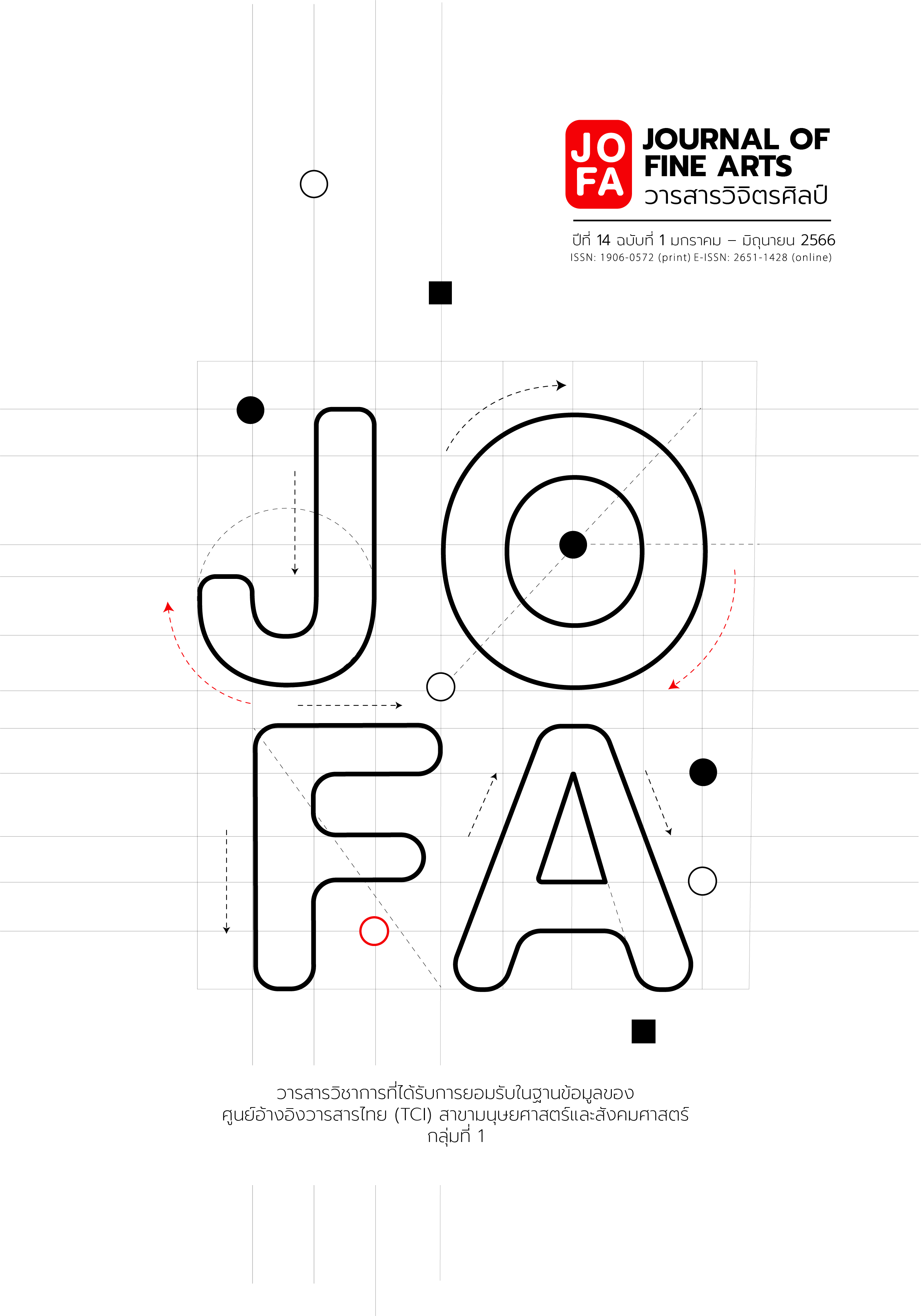Design and Development of Bag Products from Cotton-Vetiver Grass Fiber Blend, Boonpeng Leather Group
Main Article Content
Abstract
The objectives of this study were (1) to study the background and basic information of Boonpeng Leather Group and (2) to design and develop bag products from cotton-vetiver grass fiber blend for Boonpeng Leather Group in a contemporary style to meet the needs of today’s consumers. The bag designs were selected by 4 experts in fashion and textile with at least 10 years of experience using purposive sampling technique and by 103 Thai customers who were selected using convenience sampling, a non-probability sampling technique, via online questionnaire.
The results showed that (1) the community enterprise products of Boonpeng Leather Group are the results of the cooperation of 3 community enterprises in Sa Kaeo Province, which are Boonpeng Leather Group, Sai Ngam Weaving Group and Ban Noen Lao Vetiver Grass Fiber Handicraft Product Group by implementing King’s Bhumibol Sufficiency Economy Philosophy emphasizing the potential of “vetiver grass”. Vetiver grass fibers are used and developed into leather bags under the brand “BURAWA” by combining cow leather and local fabrics such as woven loincloth and cotton-vetiver grass fiber blend produced within the province. The products of this group are developed focusing on using local materials available in Sa Kaeo Province and ancient pattern called “Turtle Scale”. This pattern is popular pattern among consumers due to its beauty, sophistication and special skills of the weavers are also required in the production. The main products of the group are shoulder bags, wallets or coin purses made from leather and cotton-vetiver grass fiber blend priced between 80-3,500 Baht. The best-selling products are shoulder bags made from cotton-vetiver grass fiber blend, while the least-selling products are genuine leather bags. However, there are only a few bag designs since the members are all elderly who are not good at complicated works, this group therefore mainly focuses on the simple designs. (2) In this study, the majority of experts selected the design concept from Collection 2, in which Jok weaving technique was used to create orange jasmine pattern using twined ropes made from vetiver grass fibers in combination with embossed leather pattern from Collection 3 in order to develop into different designs. A total of 20 designs with high to highest level of satisfaction were used and developed into 6 bag designs. According to the online survey, it was found that consumers were satisfied with the collection overview. The majority of consumers were satisfied with the shoulder bag design (Design 5, 35.9%), followed by handbag design (Design 1, 24.2%), coin purse design (Design 3, 11.7%), card holder design (Design 4, 11.7%), bucket bag design (Design 2, 10.7%) and double layer shoulder bag design (Design 6, 5.8%), respectively.
Article Details

This work is licensed under a Creative Commons Attribution-NonCommercial-NoDerivatives 4.0 International License.
References
Foundation for Industrial Development. “ʻutsāhakam Khrư̄ang Nang Læ Rō̜ngthao (Krapao Thī Tham ČhāK Sing Thō̜). [Leather and footwear industry (textiles bag)].” Thaitextile.
Accessed January 27, 2020. https://thaitextile.org/th/insign/detail.558.1.0.html.
Leemuadpai, P. Khrư̄ang Nang Phư̄nthān. [Basic leather goods]. Bangkok: Odeon Store, 2001.
Rawa, B. and Rawa, S. Interview by Wisalphokha, N. and Boonpeng Leather Group, November 20, 2019.
Research and Development for Land Management Division. “Yā Fǣk Chalœ̄m Phra Kīat. [Vetiver Grass of Honor].” Accessed June 2, 2019. https://www.ldd.go.th/link_vetiver/index.htm.
The Support Arts and Crafts International Centre of Thailand (Public Organization). Nǣonōm Kānʻō̜kbǣp Ngān Hatthasin pī Khō̜ sō̜ 2020. [SACICT Craft Trend 2020]. Bangkok: Sunta, 2019.


